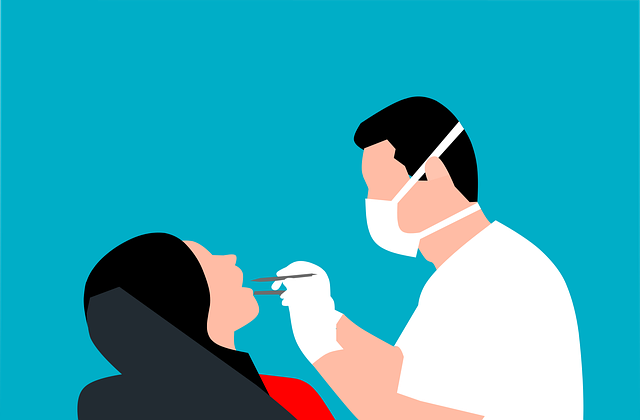Strong Legal Representation: Key to Justice for Medical Negligence Injuries

Patients suffering from medical negligence injuries face a challenging road to recovery, dealing wit…….
In the intricate web of healthcare, where lives are entrusted to medical professionals, errors can have profound consequences. Medical negligence injuries refer to the harm caused by a health care provider’s failure to exercise the level of skill and diligence expected of them. This complex issue spans legal, ethical, and financial domains, impacting patients’ lives and shaping healthcare practices globally. This article aims to provide an in-depth exploration of medical negligence injuries, unraveling its various facets and highlighting its significance in modern healthcare.
Medical negligence, often referred to as medical malpractice, occurs when a healthcare provider deviates from the accepted standard of care, causing injury or harm to a patient. This deviation can result from errors in diagnosis, treatment, medication, or communication. The core elements of a medical negligence claim include:
Historically, medical negligence lawsuits emerged as a way to hold healthcare providers accountable for their actions. Over time, these cases have evolved, shaping medical practice standards and patient safety measures. The term “negligence” signifies a failure to meet the expected standard of care, which varies depending on the specialty and context.
The impact of medical negligence injuries is not confined to any single country or region; it is a global issue with varying trends and implications. Here’s an overview:
| Region | Trends/Impact |
|---|---|
| North America | High litigation rates, with the US having one of the busiest medical malpractice courts. Strict liability laws in some states. |
| Europe | Comprehensive patient protection laws across EU member states, ensuring robust compensation for victims. |
| Asia-Pacific | Rapidly growing healthcare sectors in countries like India and China, leading to concerns over quality and negligence. |
| Middle East | Increasing awareness and stringent regulations, particularly in the UAE and Saudi Arabia. |
| Latin America | Diverse legal systems with varying levels of protection for patients, impacting negligence claims. |
In developing nations, the rapid expansion of healthcare services sometimes outpaces regulatory frameworks, leading to higher risks of medical errors. Conversely, more established healthcare systems in developed countries often have stringent oversight, but litigation can still occur due to complex patient-provider relationships.
Medical negligence injuries have significant economic ramifications, affecting both patients and healthcare providers. Here’s a breakdown:
Technology plays a pivotal role in mitigating medical negligence injuries by improving diagnostic accuracy, treatment planning, and patient monitoring. Some notable advancements include:
Governing bodies worldwide have implemented policies and regulations to address medical negligence injuries, ensuring patient safety and accountability. Key frameworks include:
Despite significant progress, medical negligence injuries face several challenges and criticisms:
Proposed Solutions:
A 35-year-old patient presented with severe abdominal pain at a hospital in the US. Through an EHR system, doctors discovered a rare condition, avoiding a potentially fatal misdiagnosis. The case highlighted the power of technology in enhancing diagnostic accuracy.
A woman in her 50s underwent a complex prostatectomy using robotic surgery. The minimally invasive procedure resulted in faster recovery, less pain, and minimal blood loss. This case demonstrated the effectiveness of robotic technology in improving surgical outcomes.
A group of patients with similar medical conditions joined forces to advocate for better treatment protocols. Their collective action led to changes in national healthcare guidelines, ensuring improved care for future patients.
The future of medical negligence injuries is filled with both opportunities and challenges. Here are some key trends and strategic considerations:
Medical negligence injuries represent a complex interplay of healthcare, law, technology, and policy. As the global healthcare landscape evolves, so does our understanding of these issues. By recognizing their significance, implementing robust policies, embracing technological advancements, and fostering international collaboration, we can enhance patient safety worldwide. This article has provided a comprehensive overview, but the journey towards safer healthcare practices is an ongoing endeavor.
Q1: How do I know if I have a medical negligence case?
A: If you believe you’ve been harmed due to a healthcare provider’s mistake or omission, consult with an experienced medical malpractice attorney. They can evaluate your case, explain the legal process, and advise on potential compensation.
Q2: What is the statute of limitations for filing a medical negligence lawsuit?
A: The time frame varies by jurisdiction. In many countries, patients have a limited period (often 1-3 years) from the date of harm to file a claim. Prompt action is crucial to ensure your rights are protected.
Q3: Can technology really prevent medical errors?
A: Absolutely! Technology plays a vital role in enhancing accuracy and reducing errors. EHR systems, advanced imaging, robotic surgery, and wearable devices are examples of how technology improves patient safety.
Q4: What happens if I have a negative experience with a healthcare provider?
A: Document your concerns, obtain a second opinion, and consider discussing the issue with hospital management or regulatory bodies. If you believe harm has occurred, consult legal counsel to understand your options.
Q5: Are medical negligence claims common in developing countries?
A: While the rates may vary, medical negligence cases are emerging more frequently in developing nations as healthcare access improves. However, resource constraints and underreporting can impact the number of reported incidents.

Patients suffering from medical negligence injuries face a challenging road to recovery, dealing wit…….

Hospitals, due to their complex nature involving multiple staff, equipment, and procedures, are hots…….

The surge in medical negligence lawsuits has reshaped business landscapes globally, forcing organiza…….

Medical negligence injuries, from misdiagnosis to surgical errors, cause significant harm. Specializ…….

Victims of medical negligence injuries need to understand their harm to navigate legal redress and p…….

Misdiagnosis and treatment delays caused by inadequate healthcare training, oversight, or communicat…….

Medical negligence injuries are a significant concern within the U.S. healthcare system, arising fro…….

Victims of medical negligence injuries can seek justice and compensation through specialized legal a…….

Medical negligence can cause severe physical and psychological harm, including pain, disabilities, a…….